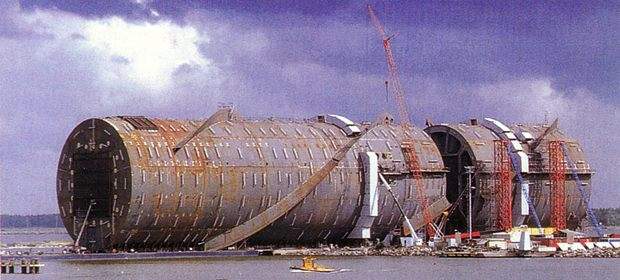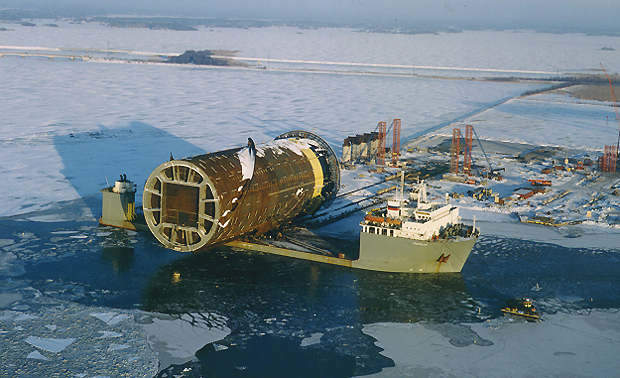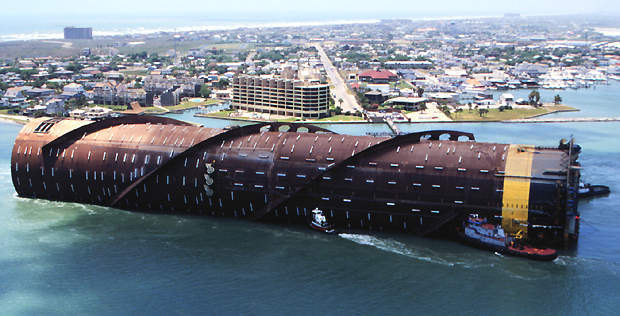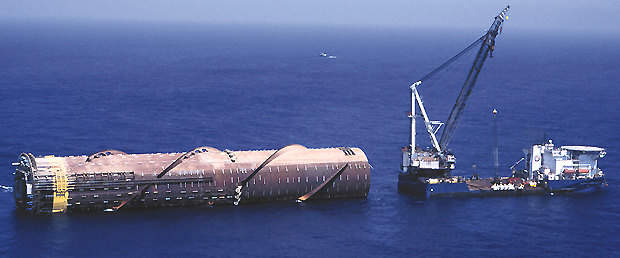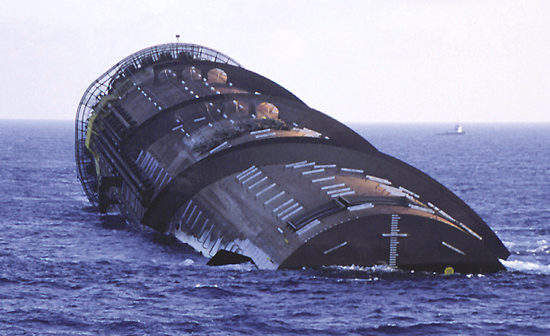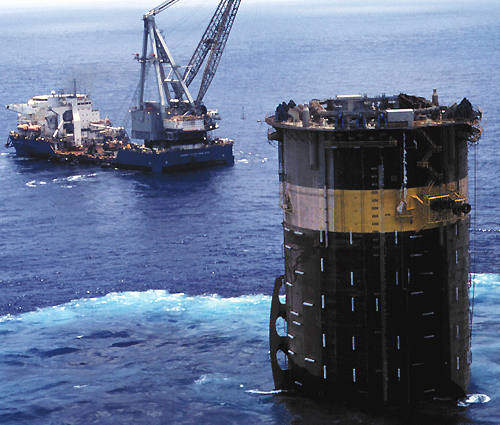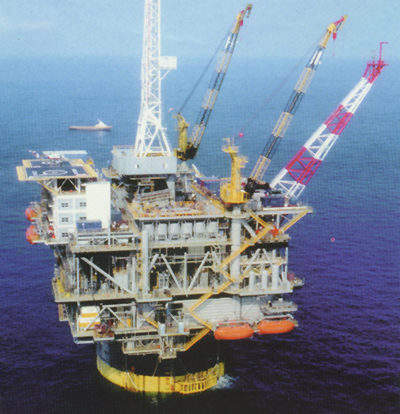The Genesis field is located 150 miles south of New Orleans, across the three Green Canyon blocks 160, 161 and 205. The water depth varies from 2,500ft to 3,000ft.
The Genesis production facility is moored in 2,600ft of water.
Reserves
Genesis lies in the Viosca Knoll Carbonate Trend. The field contains reserves of 160 million bbl. Following drilling, flow tests were conducted in which the field produced at rates of up to 8,300 barrels (bbl) per day.
Production will peak at about 55,000bbl of oil and 72 million cubic feet of natural gas per day.
Engineering
The engineering design and procurement was handled in two phases. The front-end engineering (FEE) included the preparation of installation plans, electrical lines, equipment arrangement and cost estimates.
The detailed engineering phase included the deck’s structural design, piping, electrical and instrumentation design, requisition, inspection and hook-up through to start-up.
Development
Genesis is being developed using a cylindrical steel spar, which supports both the drilling operations and production facilities. This makes it the world’s first drilling / production spar.
Air-filled compartments on the upper portion of the cylinder provide buoyancy, while seawater-filled tanks on the bottom give weight and stability.
Topsides
Fabrication of the platform’s deck was carried out at McDermott’s Morgan City facility in Louisiana. Engineering was provided by McDermott Engineering Houston.
The topsides have a deck surface area of about 100,000ft² (three 175ft x 175ft levels) and a loadout weight of approximately 9,000t.
The topsides consists of 5,150t of structural steel, 2,600t of production equipment and 945t of interconnecting piping, electrical lines and instrumentation. The fabrication contract includes mechanical completion, commissioning, loadout and tiedown.
The Genesis topsides were fabricated as two units: the production deck and the drill / utility deck. Prior to loadout, the drill / utility deck was cut into two pieces (between truss rows one and two) to facilitate movement.
Hull
The Genesis hull is 122ft in diameter and 705ft-tall. It was manufactured in two halves at Aker Rauma’s Pori yard, in Finland.
The first half, weighing 10,842t was sailed to Corpus Christi two months before the second 15,861t-half, using Dockwise’s submersible lift vessel, Transshelf. The hull incorporates a 58ft x 58ft well bay at its centre, which is enough for 20 well slots.
Installation
The spar installation was carried out by McDermott’s Derrick Barge 50 in three phases: the mooring system, the hull and the topsides. The platform is held in place with a 14-point mooring system.
Each line is composed of 250ft of 5.25in-diameter anchor chain, 3,000ft of 5.25in-diameter wire rope and 1,150ft of hull chain. An anchor pile / hammer assembly, attached to the chain and mooring wire, was lowered to the seafloor.
These mooring piles had a loadout weight of 3,590t. Each mooring pile was 8ft outside diameter and 235ft-long. Following this, the hull was brought into the field.
Approximately 178,000t of water ballast was introduced in a staged free flooding to upend the hull. The final stage of upending, which rotated the hull through over 70° and took only 76 seconds.
The hull was then positioned near the centre of the mooring pattern. The 14 mooring lines were attached to the chain jacks on the hull from a temporary work deck.
Risers
The riser system consists of the production, export and drilling risers, all run with a platform drilling rig. The complete system analysis involved complex analytical modelling of the individual components and the interface with the spar.
The spar can support up to 20 production risers, two export pipeline risers and one drilling riser.
Each is approximately 2,650ft long up to the span, from seafloor wellheads to the topsides. The 20 subsea wellheads and two export riser bases on the seafloor are arranged in a 140ft-diameter circle, with 20ft of spacing.

